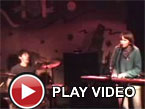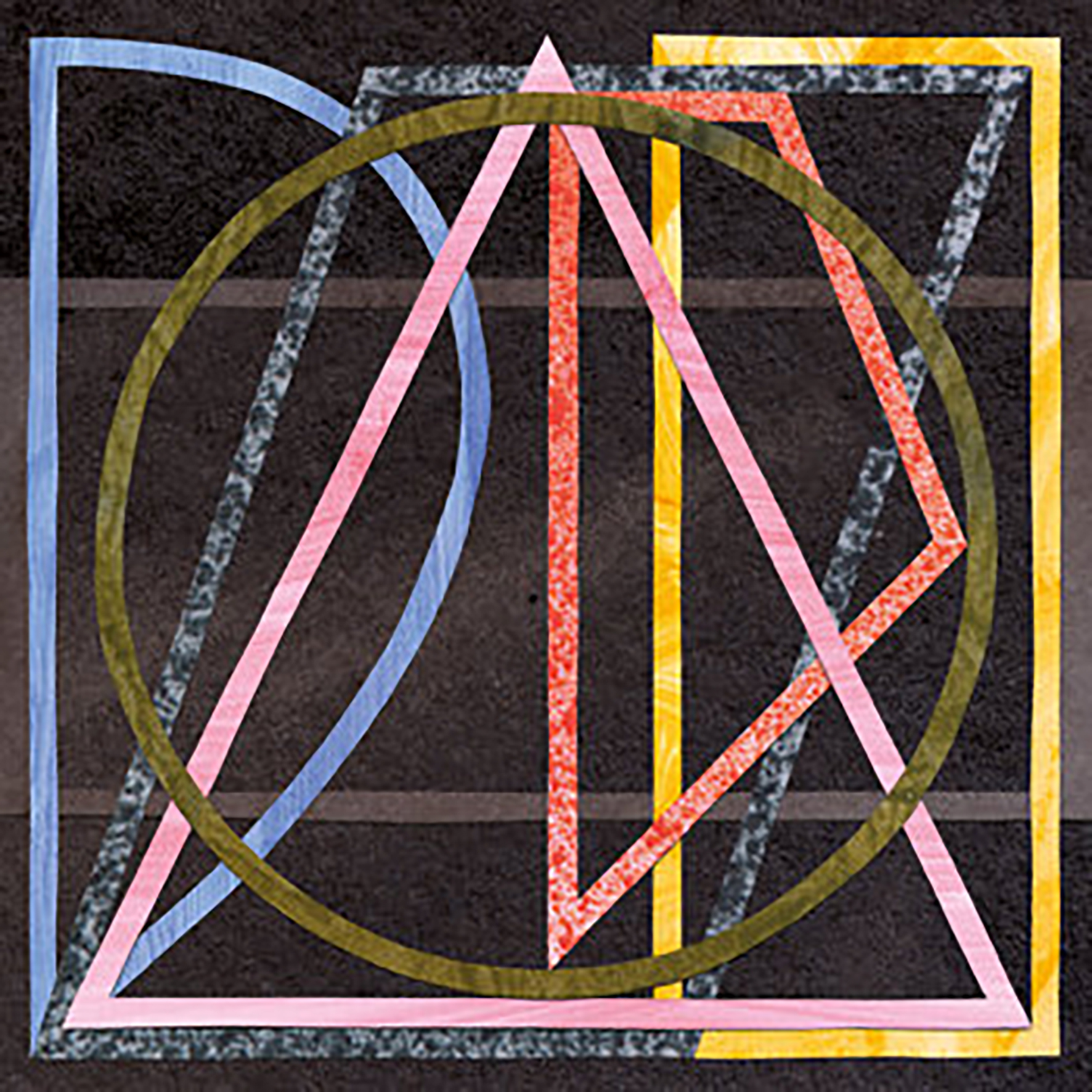 When I first found out about this album, I was not quite sure how to feel about its ambitious structural premise, as the idea of a vinyl record with 112 locked grooves felt suspiciously like a willfully annoying conceptual art statement. That said, I am unable to ever resist the allure of a killer drummer in an indulgent mood, so I was still quite eager to hear what Sartorius had planned for his unique format. My first impression was a favorable one, as I have been on a bit of a Niagara bender and the shifting beat patterns here called to mind a slowed and deconstructed kindred spirit to the tour de force of "Sangandongo." My next impression was mild exasperation, as I was not thrilled that every amazing beat lasted a mere minute before giving way to something new. That revealed the appeal of the physical release though, as this album is packed full of hypnotic rhythms that would make absolutely trance-inducing infinite loops. Naturally, that opens up a host of compelling interactive ways to experience the album, as it is a Pandora's box of multifarious percussive delights. To some degree, I expected something in that vein (as far as gimmicks go, this is a very cool and well thought-out one), but I was still blindsided by both the sheer imagination of Sartorius's rhythms and the way the album as a whole feels like a transcendent psychedelic epic by the end. As La Monte Young and others have decisively proven, sustained immersion in a very insistent and focused vision can feel like a remarkably profound and mind-rewiring experience.
When I first found out about this album, I was not quite sure how to feel about its ambitious structural premise, as the idea of a vinyl record with 112 locked grooves felt suspiciously like a willfully annoying conceptual art statement. That said, I am unable to ever resist the allure of a killer drummer in an indulgent mood, so I was still quite eager to hear what Sartorius had planned for his unique format. My first impression was a favorable one, as I have been on a bit of a Niagara bender and the shifting beat patterns here called to mind a slowed and deconstructed kindred spirit to the tour de force of "Sangandongo." My next impression was mild exasperation, as I was not thrilled that every amazing beat lasted a mere minute before giving way to something new. That revealed the appeal of the physical release though, as this album is packed full of hypnotic rhythms that would make absolutely trance-inducing infinite loops. Naturally, that opens up a host of compelling interactive ways to experience the album, as it is a Pandora's box of multifarious percussive delights. To some degree, I expected something in that vein (as far as gimmicks go, this is a very cool and well thought-out one), but I was still blindsided by both the sheer imagination of Sartorius's rhythms and the way the album as a whole feels like a transcendent psychedelic epic by the end. As La Monte Young and others have decisively proven, sustained immersion in a very insistent and focused vision can feel like a remarkably profound and mind-rewiring experience.
-OUS
I listened to this album in its digital form, which doubtlessly provided a radically different experience than the vinyl. Nevertheless, the building blocks are identical, as each numbered piece is essentially a 1.8 second loop allowed to play out for exactly one minute and one second. Each piece segues seamlessly into the next with no space in between and all feel like they are roughly the same tempo, so the whole album has a hypnotically consistent flow. At first, the beats seem cool but fairly straightforward, but indications that Sartorius has something more ambitious in mind begin to appear quickly, as he starts sneaking increasingly adventurous sounds, patterns, and flourishes into the insistent pulse. I believe I was first hooked by skittering, off-kilter rhythm of the fourth piece, but that loop was soon eclipsed by even more killer beats, which themselves became eclipsed by still others as the album unfolded. It is hard to nail down an overarching pattern to the sequencing, but there are occasional runs where Sartorius unleashes a flurry of dazzling loops in rapid succession and it all seems to cumulatively build into something wonderful.
Part of the album's brilliance is that those clusters tend to all be compelling for different reasons, as sometimes Sartorius works in a virtuosic fill, while other times he locks into an especially lurching, tumbling, or downright weird time signature without the slightest dip in the album's propulsive forward motion. Sometimes it feels like I am being swept along by a tide, while other times it feels I am descending like an almost ritualistic rhythmic trance, which is an impressive feat for an album this ostensibly one-dimensional and purposely fragmented. Notably, Sartorius used a "prepared" drum kit, which enables a surprisingly varied range of sounds and levels of textural complexity. For example, "Locked Groove 084" feels like a killer hip-hop beat tape, while "Locked Groove 051" feels like it could be plucked from a Sublime Frequencies album and "Locked Groove 047" sounds like a futuristic industrial banger. Other times, Sartorius locks into something that feels like Indian techno, a free jazz drummer going wild in a junkyard, or something absolutely alien-sounding, like the gurgling and clanging "Locked Groove 011." Anyone looking for a great drummer showcasing a wildly imaginative array of beats will not be disappointed here, yet I was most surprised by how masterfully Sartorius overshot that mark to craft something considerably larger than the sum of its parts. Sartorius's stated goal was that "listeners will experience these compositions like they would explore a painting," and he succeeded far beyond my expectations in that regard. Locked Grooves is a deliciously rich vein that succeeds both as a whole and as a collection of compelling fragments that can be isolated and recontextualized into something equally fascinating. As far as solo drummer albums go, Locked Grooves is high art that masterfully raises the bar for what is possible.
Samples can be found here.
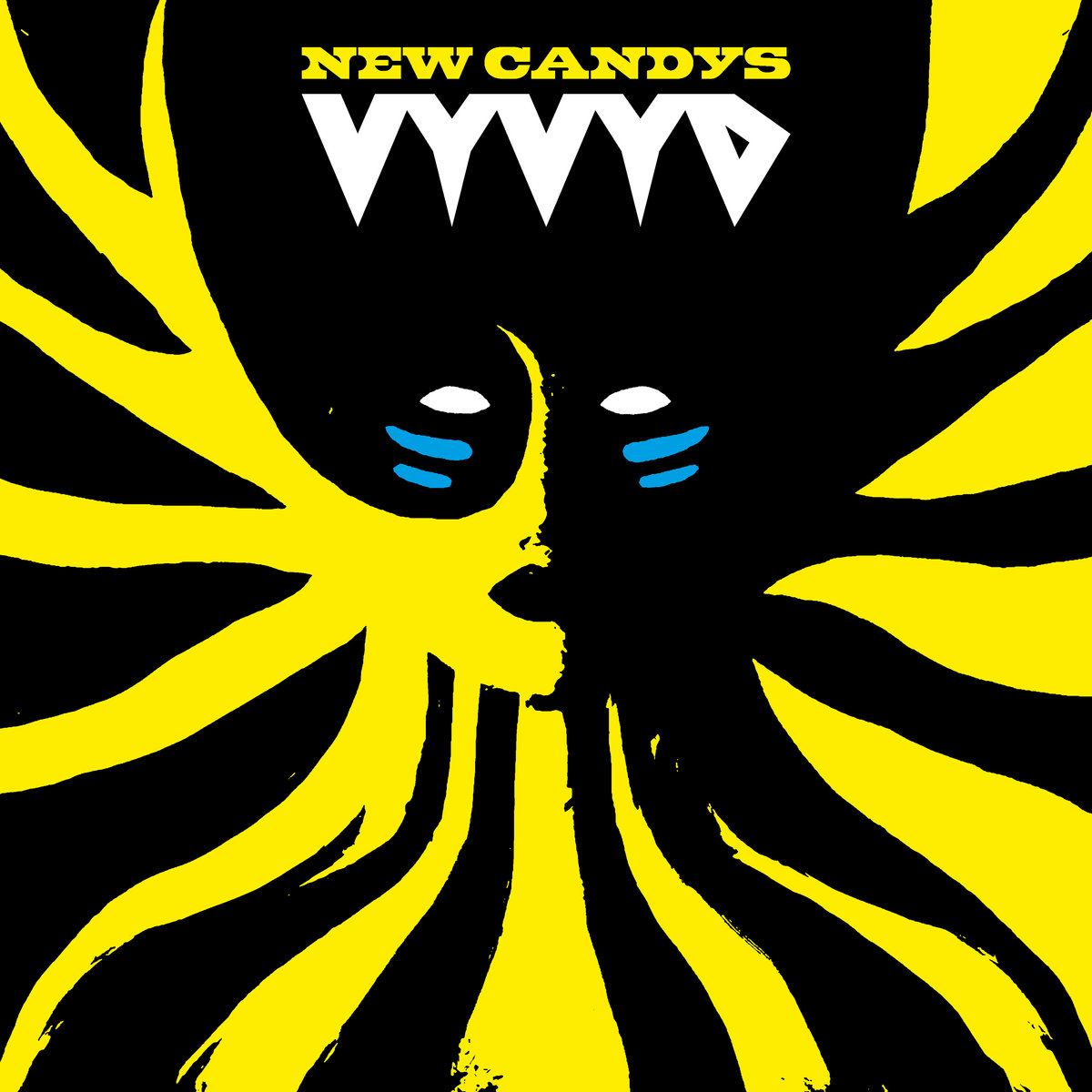 The latest from Italy's New Candys blasts immediately from the gate with an ear-candy combination of pulsating synth and massive drums, bass to match, and world-weary vocals before exploding into millions of crystalline guitar chords coated in fuzz-drenched reverb, resulting in what is quite possibly the most danceable tune the group has ever crafted. All the psyched-out power of prior releases exists, but their fourth full-length comes with the added bonus of cleaner production, allowing the powerhouse rhythm section to step forward amidst what feels to be a recharged songwriting team. Vyvyd becomes less a title and more an experience.
The latest from Italy's New Candys blasts immediately from the gate with an ear-candy combination of pulsating synth and massive drums, bass to match, and world-weary vocals before exploding into millions of crystalline guitar chords coated in fuzz-drenched reverb, resulting in what is quite possibly the most danceable tune the group has ever crafted. All the psyched-out power of prior releases exists, but their fourth full-length comes with the added bonus of cleaner production, allowing the powerhouse rhythm section to step forward amidst what feels to be a recharged songwriting team. Vyvyd becomes less a title and more an experience.

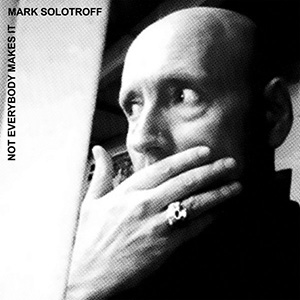 Mark Solotroff could never be accused of taking it easy when it comes to music, both in terms of style and productivity. Since the beginning of 2020 he has been responsible for three side project releases (Nightmares, The Fortieth Day, and Ensemble Sacrés Garçons), two archival releases from his early Intrinsic Action band, and just a matter of weeks ago a BLOODYMINDED! live compilation. Add that to three volumes of compiled solo material and an album last year, and there’s a massive stack of material that Not Everybody Makes It now sits atop. Even with all of that material, this new album stands out as distinct, and somewhat of an unexpected turn for Solotroff's work, but is still clearly his.
Mark Solotroff could never be accused of taking it easy when it comes to music, both in terms of style and productivity. Since the beginning of 2020 he has been responsible for three side project releases (Nightmares, The Fortieth Day, and Ensemble Sacrés Garçons), two archival releases from his early Intrinsic Action band, and just a matter of weeks ago a BLOODYMINDED! live compilation. Add that to three volumes of compiled solo material and an album last year, and there’s a massive stack of material that Not Everybody Makes It now sits atop. Even with all of that material, this new album stands out as distinct, and somewhat of an unexpected turn for Solotroff's work, but is still clearly his.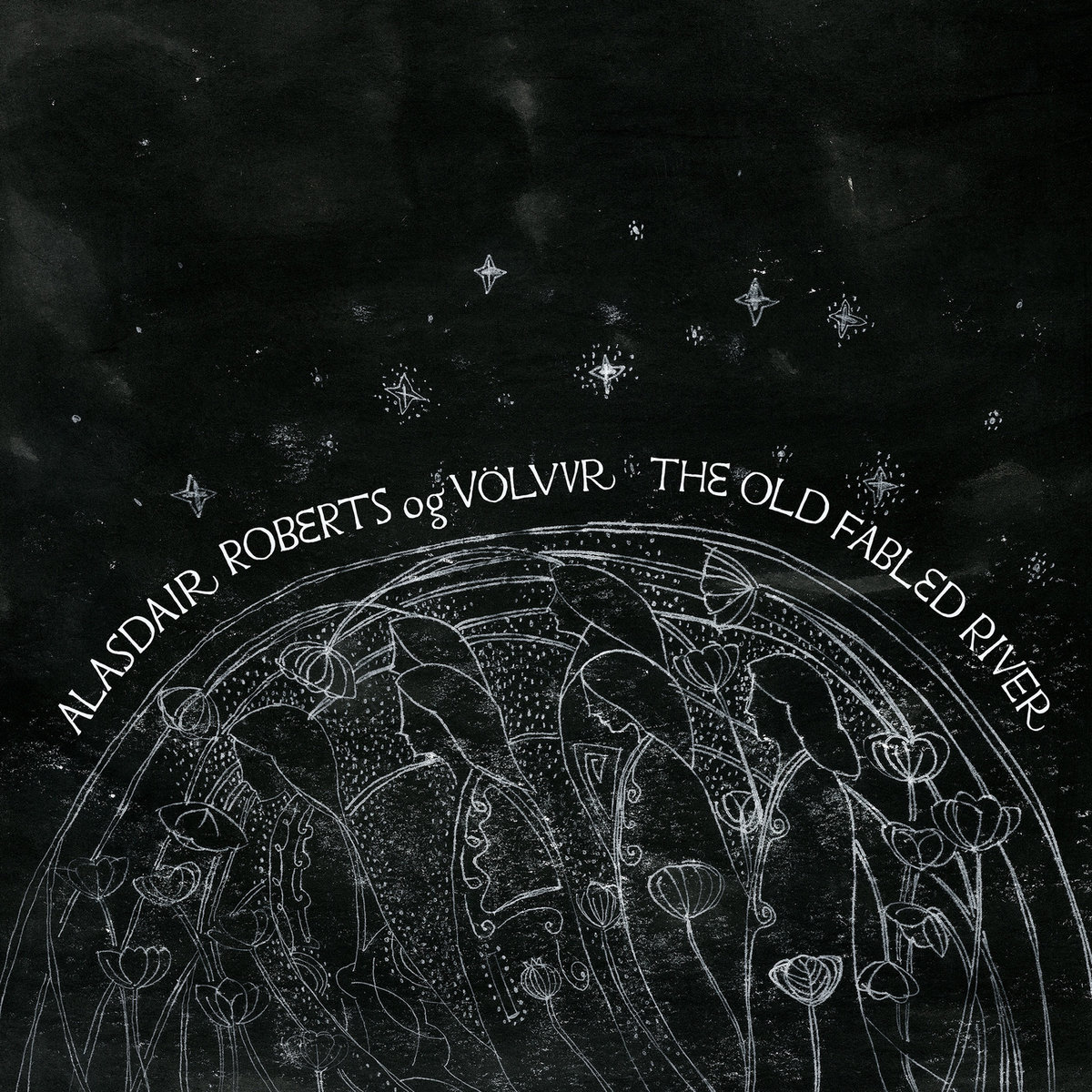 Alasdair Roberts’ creative spirit and respect for tradition dovetail perfectly on this collaboration with Norwegian collective, Völvur. With traditional songs (in both artists’ languages) balanced by four new Roberts compositions, and the latter’s plaintive voice complemented by both Marthe Lea’s beautiful singing and the collective’s edgy, swinging and restrained playing, The Old Fabled River is joyous and mournful in equal measure.
Alasdair Roberts’ creative spirit and respect for tradition dovetail perfectly on this collaboration with Norwegian collective, Völvur. With traditional songs (in both artists’ languages) balanced by four new Roberts compositions, and the latter’s plaintive voice complemented by both Marthe Lea’s beautiful singing and the collective’s edgy, swinging and restrained playing, The Old Fabled River is joyous and mournful in equal measure.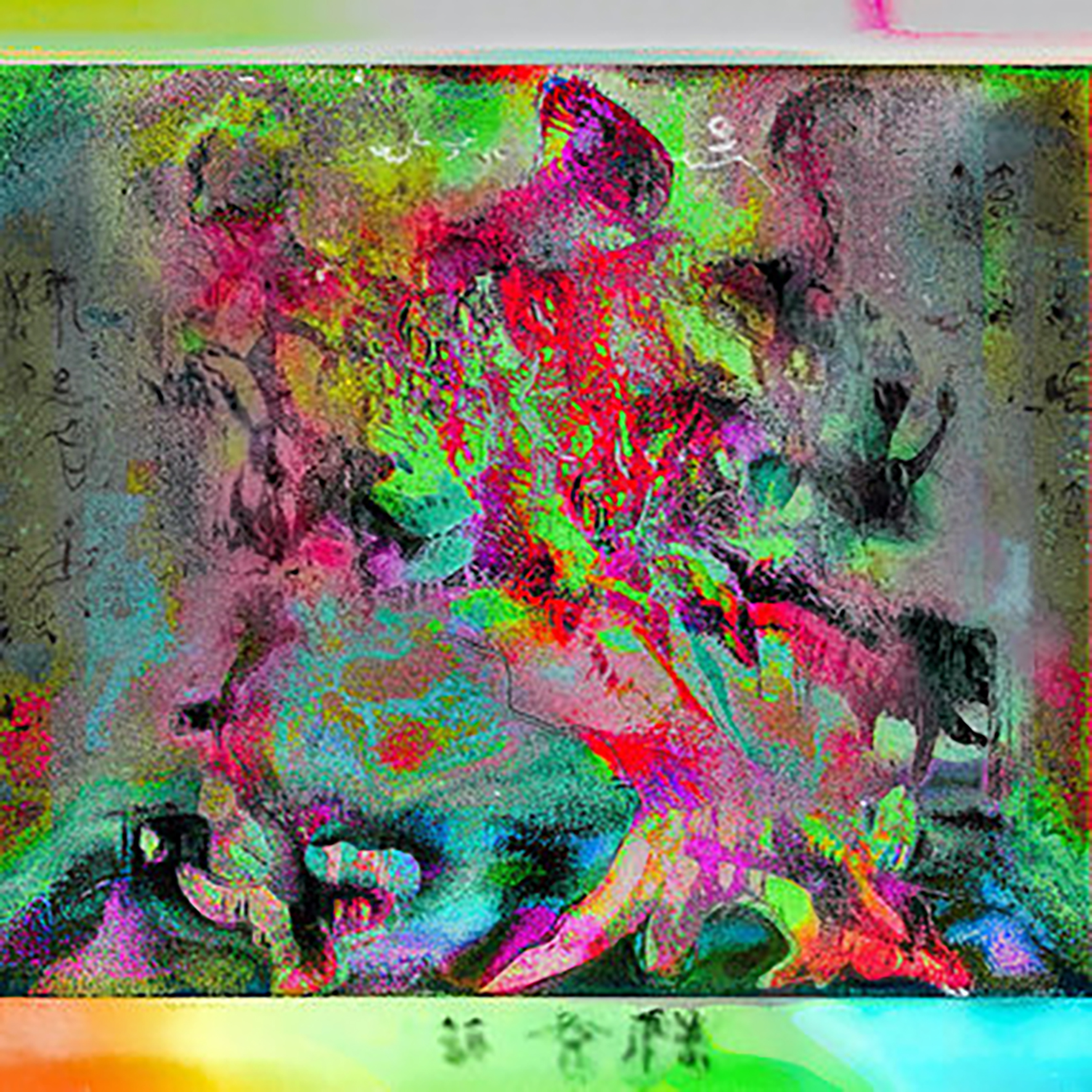 Unraveling the discography and line-up mutations of this Ho Chi Minh City-based collective turned out to be quite an unexpected challenge, as they have been releasing full-lengths and EPs since at least 2014, yet this latest album is being billed as the project's debut. I thought this might be the first release with "collective" appended to the group's name, but that is not the case either. That said, the project now appears to be a trio consisting of original members Phạm Thế Vũ and Jung Buffalo, as well as relatively recent addition Zach Schreier (who ostensibly composed much of the album). In any case, this latest release bears little stylistic resemblance to several of RCD's previous releases. Much of that is likely due to the involvement of Berlin-based producer Ziúr, who alternately punched up the songs to Subtext's exactingly high standards, "reduced them to a cinder," or "beamed them into the fifth dimension." Regardless of how this album took shape, it is quite a dazzling and deliriously kinetic achievement, resembling a freewheeling Carl Stone-esque plunderphonic tour de force of shapeshifting Vietnamese cultural fragments.
Unraveling the discography and line-up mutations of this Ho Chi Minh City-based collective turned out to be quite an unexpected challenge, as they have been releasing full-lengths and EPs since at least 2014, yet this latest album is being billed as the project's debut. I thought this might be the first release with "collective" appended to the group's name, but that is not the case either. That said, the project now appears to be a trio consisting of original members Phạm Thế Vũ and Jung Buffalo, as well as relatively recent addition Zach Schreier (who ostensibly composed much of the album). In any case, this latest release bears little stylistic resemblance to several of RCD's previous releases. Much of that is likely due to the involvement of Berlin-based producer Ziúr, who alternately punched up the songs to Subtext's exactingly high standards, "reduced them to a cinder," or "beamed them into the fifth dimension." Regardless of how this album took shape, it is quite a dazzling and deliriously kinetic achievement, resembling a freewheeling Carl Stone-esque plunderphonic tour de force of shapeshifting Vietnamese cultural fragments.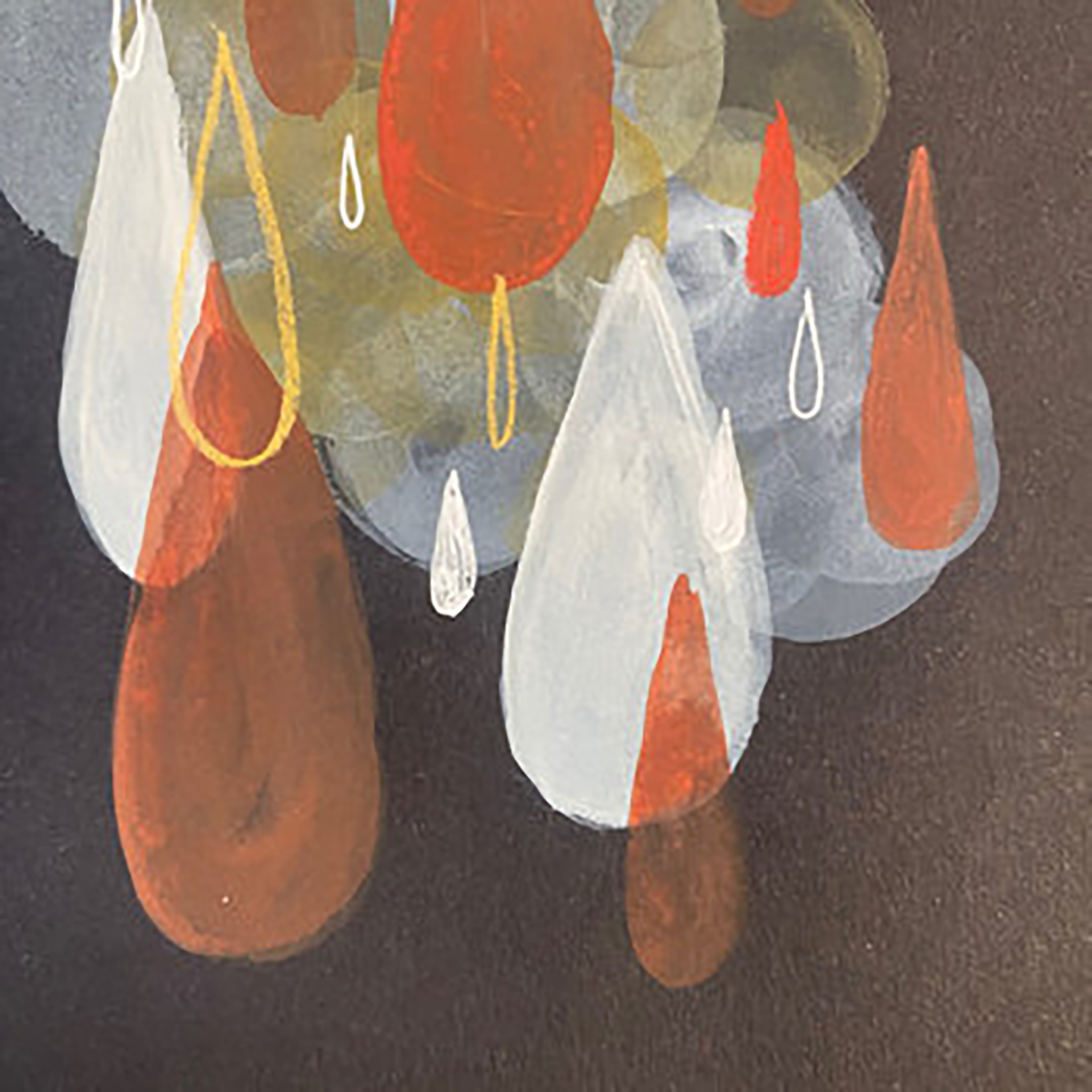 As alluded to in its title, Dispatches from the Drift is something of an accidental album, as it is a collection of keyboard improvisations that Tara Jane O'Neil informally recorded during the pandemic lockdown that were never intended for release. In fact, many were casually recorded on her phone and most "were promptly forgotten," but O'Neil happened to stumble back upon them while digging around for fragments of inspiration that could blossom into fully formed songs. These are not the ones met that criteria. but they amount to something similarly wonderful. As O'Neil herself puts it, these pieces are the ones that "were not looking for a form or seeking to be known," so she decided to present them as they were without further polishing or embellishment ("complete, traveling pieces that resolve or simply end"). In lesser hands, such an album would feel like a series of unfinished sketches, but O'Neil's instincts regarding this experiment are remarkably unerring. For the most part, the "keyboard improvisations" origin ensures that the album tends to linger in pleasantly blurred "ambient" territory, but there are quite a few striking surprises lurking here too (some very "dreampop" and some considerably more outré). The entire album is quite a leftfield delight though, as it feels every bit as strong as O'Neil's more formal work. Her inspiration simply took a different shape this time around.
As alluded to in its title, Dispatches from the Drift is something of an accidental album, as it is a collection of keyboard improvisations that Tara Jane O'Neil informally recorded during the pandemic lockdown that were never intended for release. In fact, many were casually recorded on her phone and most "were promptly forgotten," but O'Neil happened to stumble back upon them while digging around for fragments of inspiration that could blossom into fully formed songs. These are not the ones met that criteria. but they amount to something similarly wonderful. As O'Neil herself puts it, these pieces are the ones that "were not looking for a form or seeking to be known," so she decided to present them as they were without further polishing or embellishment ("complete, traveling pieces that resolve or simply end"). In lesser hands, such an album would feel like a series of unfinished sketches, but O'Neil's instincts regarding this experiment are remarkably unerring. For the most part, the "keyboard improvisations" origin ensures that the album tends to linger in pleasantly blurred "ambient" territory, but there are quite a few striking surprises lurking here too (some very "dreampop" and some considerably more outré). The entire album is quite a leftfield delight though, as it feels every bit as strong as O'Neil's more formal work. Her inspiration simply took a different shape this time around.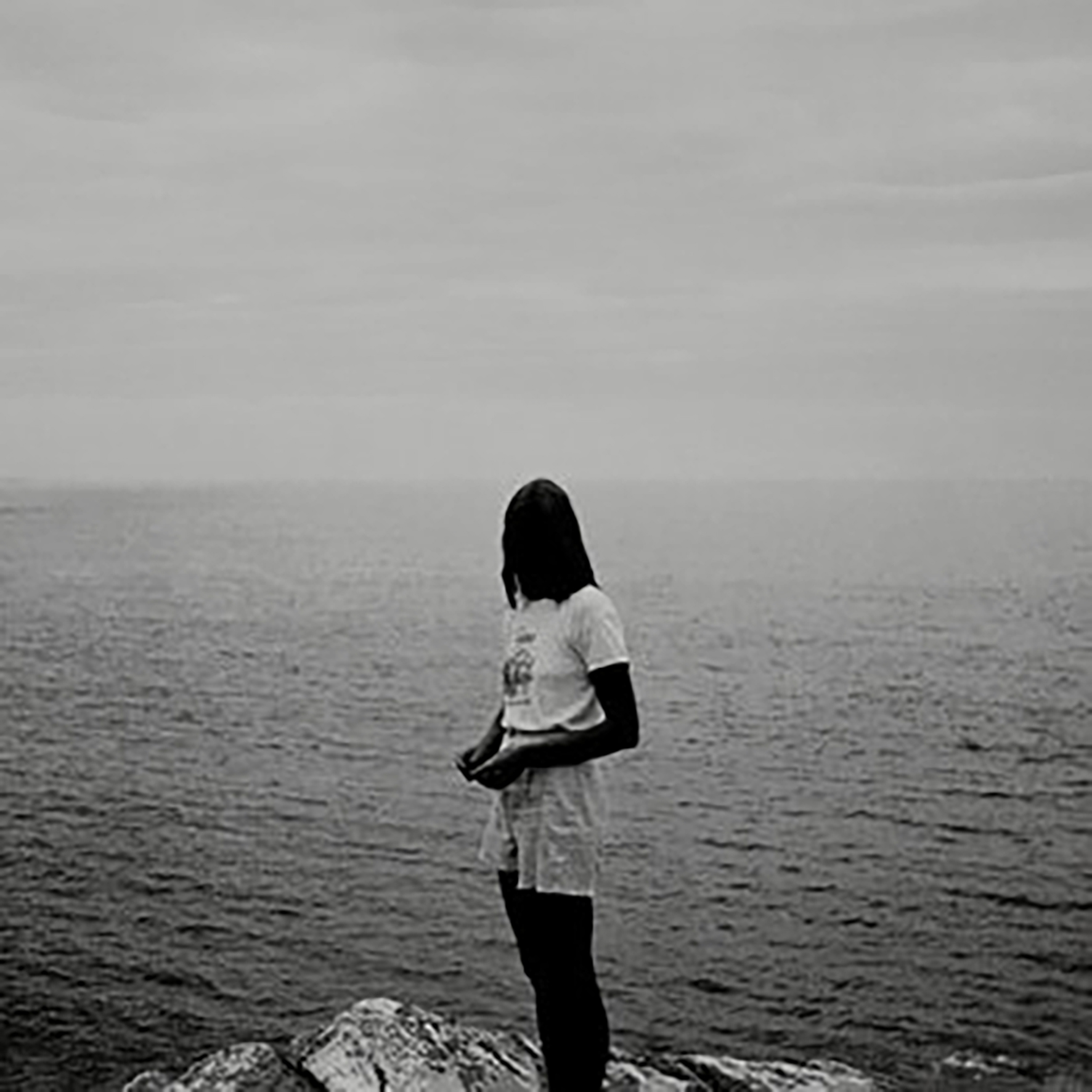 This latest album from Madeline Johnston takes its title from a forensic chemical that emits a blue glow when it comes in contact with blood at a crime scene. That macabre yet beautiful transformation provides the album's guiding metaphor, as Johnston attempts the similar feat of "turning trial and tribulation into sources of light." That is thematically familiar Midwife territory, of course, but Luminol feels like the beginning of a new phase stylistically, as these songs are simultaneously more anthemic and more starkly minimal than the project’s previous fare. While that is not necessarily an unstable combination, Johnston does tone down her artier tendencies to fitfully showcase a newfound love of tighter songcraft and hard rock-inspired swagger. That approach suits her unexpectedly well, as some of the better moments of Luminol resemble a hiss-ravaged shoegaze deconstruction of a power ballad by someone like Lita Ford, Pat Benatar, or Joan Jett, which is certainly something I was not expecting to encounter here. Luminol is definitely more of an straightforward "rock" record than I anticipated. For the most part, however, Johnston’s hazy, slow-motion, and abstracted homages to ‘80s and ‘90s rock radio work quite well, as this album seems to have instantly become a fan favorite. Some fans of previous albums will likely miss Midwife's sharper edges, but I suspect most will warm to this more punchy and comparatively playful side of Johnston's art.
This latest album from Madeline Johnston takes its title from a forensic chemical that emits a blue glow when it comes in contact with blood at a crime scene. That macabre yet beautiful transformation provides the album's guiding metaphor, as Johnston attempts the similar feat of "turning trial and tribulation into sources of light." That is thematically familiar Midwife territory, of course, but Luminol feels like the beginning of a new phase stylistically, as these songs are simultaneously more anthemic and more starkly minimal than the project’s previous fare. While that is not necessarily an unstable combination, Johnston does tone down her artier tendencies to fitfully showcase a newfound love of tighter songcraft and hard rock-inspired swagger. That approach suits her unexpectedly well, as some of the better moments of Luminol resemble a hiss-ravaged shoegaze deconstruction of a power ballad by someone like Lita Ford, Pat Benatar, or Joan Jett, which is certainly something I was not expecting to encounter here. Luminol is definitely more of an straightforward "rock" record than I anticipated. For the most part, however, Johnston’s hazy, slow-motion, and abstracted homages to ‘80s and ‘90s rock radio work quite well, as this album seems to have instantly become a fan favorite. Some fans of previous albums will likely miss Midwife's sharper edges, but I suspect most will warm to this more punchy and comparatively playful side of Johnston's art. When I first found out about this album, I was not quite sure how to feel about its ambitious structural premise, as the idea of a vinyl record with 112 locked grooves felt suspiciously like a willfully annoying conceptual art statement. That said, I am unable to ever resist the allure of a killer drummer in an indulgent mood, so I was still quite eager to hear what Sartorius had planned for his unique format. My first impression was a favorable one, as I have been on a bit of a Niagara bender and the shifting beat patterns here called to mind a slowed and deconstructed kindred spirit to the tour de force of "Sangandongo." My next impression was mild exasperation, as I was not thrilled that every amazing beat lasted a mere minute before giving way to something new. That revealed the appeal of the physical release though, as this album is packed full of hypnotic rhythms that would make absolutely trance-inducing infinite loops. Naturally, that opens up a host of compelling interactive ways to experience the album, as it is a Pandora's box of multifarious percussive delights. To some degree, I expected something in that vein (as far as gimmicks go, this is a very cool and well thought-out one), but I was still blindsided by both the sheer imagination of Sartorius's rhythms and the way the album as a whole feels like a transcendent psychedelic epic by the end. As La Monte Young and others have decisively proven, sustained immersion in a very insistent and focused vision can feel like a remarkably profound and mind-rewiring experience.
When I first found out about this album, I was not quite sure how to feel about its ambitious structural premise, as the idea of a vinyl record with 112 locked grooves felt suspiciously like a willfully annoying conceptual art statement. That said, I am unable to ever resist the allure of a killer drummer in an indulgent mood, so I was still quite eager to hear what Sartorius had planned for his unique format. My first impression was a favorable one, as I have been on a bit of a Niagara bender and the shifting beat patterns here called to mind a slowed and deconstructed kindred spirit to the tour de force of "Sangandongo." My next impression was mild exasperation, as I was not thrilled that every amazing beat lasted a mere minute before giving way to something new. That revealed the appeal of the physical release though, as this album is packed full of hypnotic rhythms that would make absolutely trance-inducing infinite loops. Naturally, that opens up a host of compelling interactive ways to experience the album, as it is a Pandora's box of multifarious percussive delights. To some degree, I expected something in that vein (as far as gimmicks go, this is a very cool and well thought-out one), but I was still blindsided by both the sheer imagination of Sartorius's rhythms and the way the album as a whole feels like a transcendent psychedelic epic by the end. As La Monte Young and others have decisively proven, sustained immersion in a very insistent and focused vision can feel like a remarkably profound and mind-rewiring experience.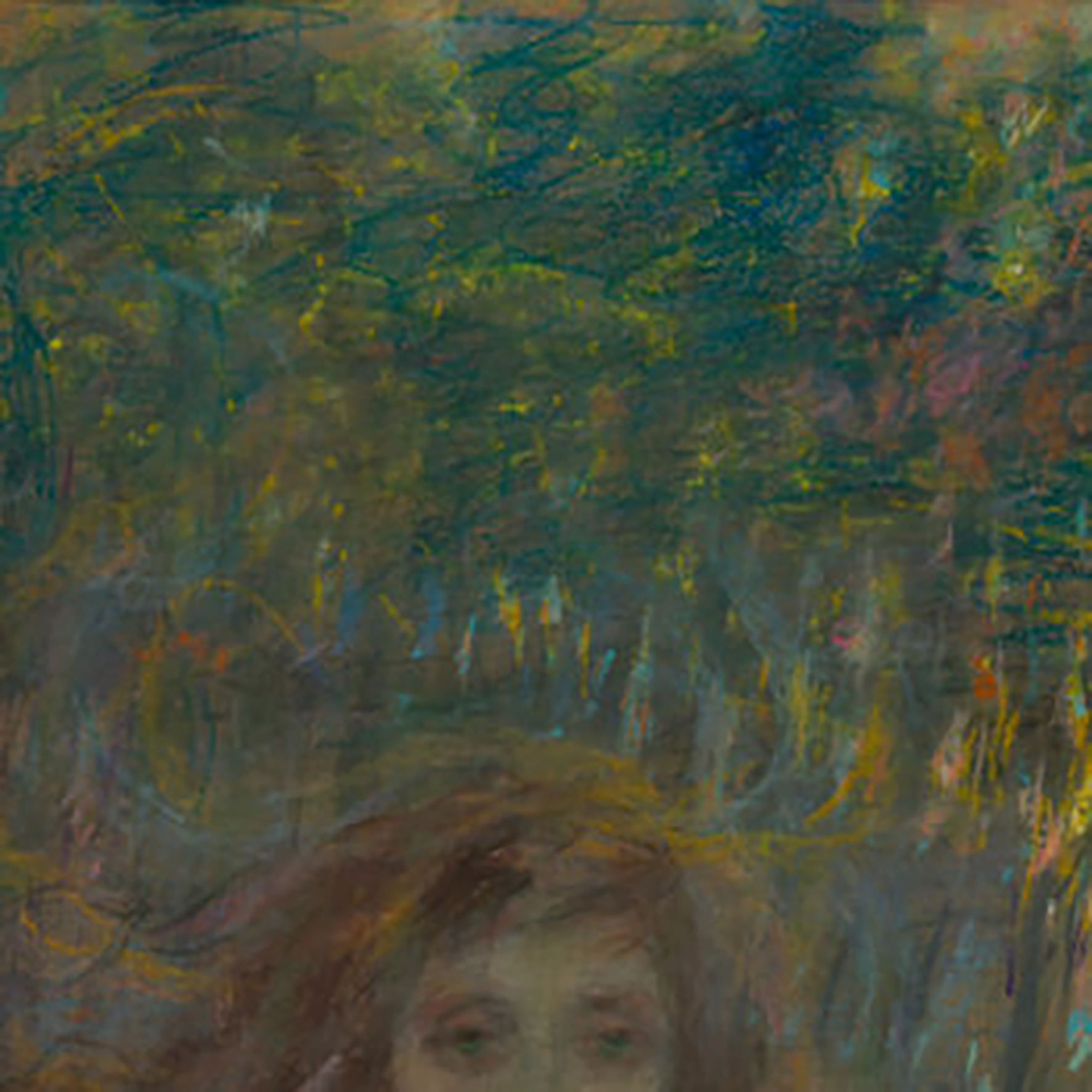 This appears to be the first major release for this long-running (if fitful) Pye Corner Audio side project, as Martin Jenkins' previous albums under this alias have all been limited CD-Rs. It certainly feels like a suitably strong statement for such an occasion. In the words of Ecstatic, Spectral Corridor "treads the line between occult soundtrack and zonked out space jam," which is a fairly apt characterization of Jenkins' latest aesthetic evolution even if it does not quite do justice to the sublime beauty of some of these pieces. According to Jenkins, this project draws its inspiration from "field recordings of walks through forests wielding finger chimes, long slow tape loops, treated guitars, elegiac organ tones, free running oscillator banks and chance operations," which mostly translates into slowly pulsing drones, subtle psychedelic touches, and a pervading air of shadowy mystery. That said, Spectral Corridor sounds considerably different from its more lush 2013 predecessor Bucolica, as Jenkins clearly took the "spectral" part of the album title very seriously, distilling his synth-centric ambient/drone to a wonderfully haunted-sounding and elegantly brooding suite of gently phantasmagoric soundscapes.
This appears to be the first major release for this long-running (if fitful) Pye Corner Audio side project, as Martin Jenkins' previous albums under this alias have all been limited CD-Rs. It certainly feels like a suitably strong statement for such an occasion. In the words of Ecstatic, Spectral Corridor "treads the line between occult soundtrack and zonked out space jam," which is a fairly apt characterization of Jenkins' latest aesthetic evolution even if it does not quite do justice to the sublime beauty of some of these pieces. According to Jenkins, this project draws its inspiration from "field recordings of walks through forests wielding finger chimes, long slow tape loops, treated guitars, elegiac organ tones, free running oscillator banks and chance operations," which mostly translates into slowly pulsing drones, subtle psychedelic touches, and a pervading air of shadowy mystery. That said, Spectral Corridor sounds considerably different from its more lush 2013 predecessor Bucolica, as Jenkins clearly took the "spectral" part of the album title very seriously, distilling his synth-centric ambient/drone to a wonderfully haunted-sounding and elegantly brooding suite of gently phantasmagoric soundscapes.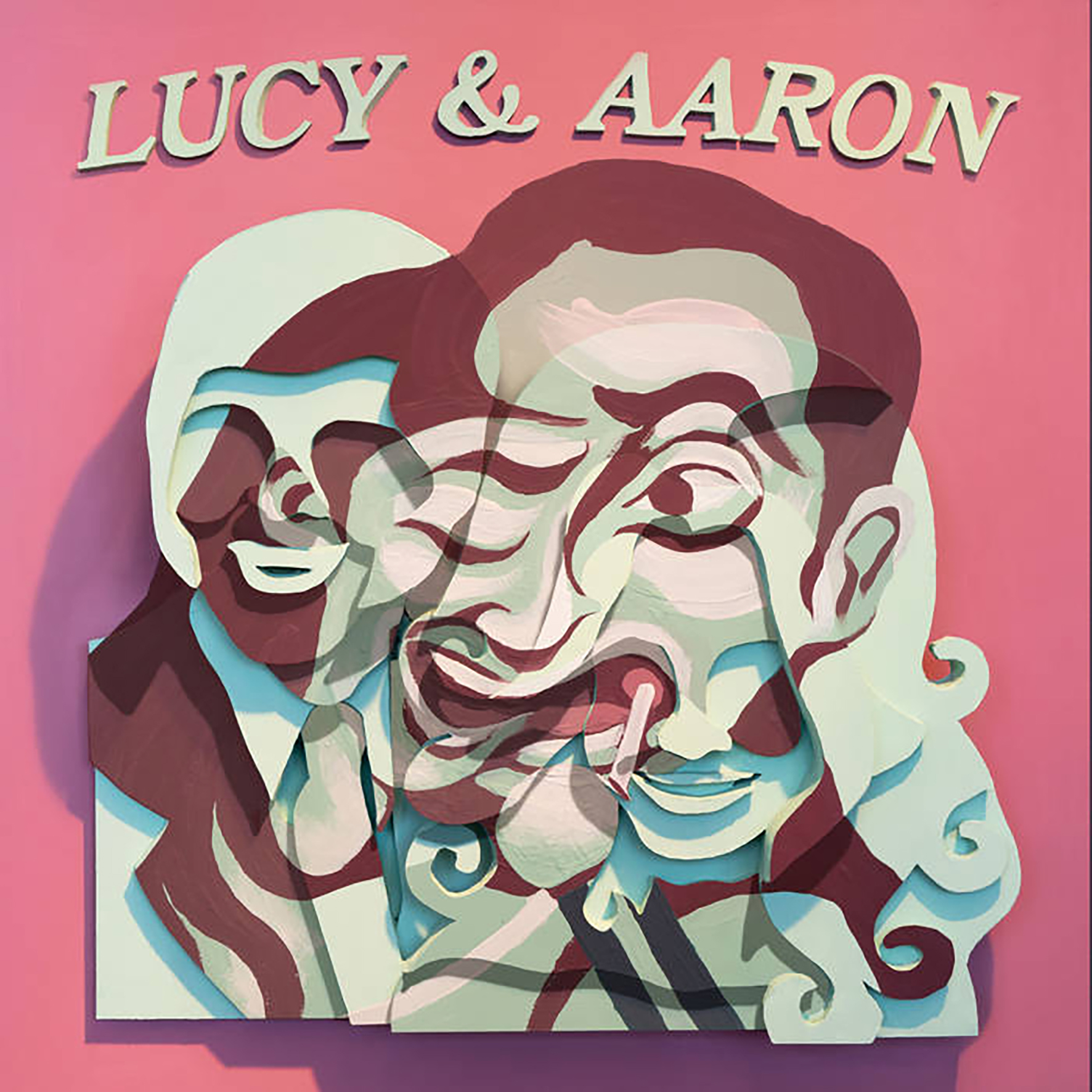 The underground/experimental music world is full of promising-sounding collaborations that yield underwhelming or half-baked results, but Lucy & Aaron is a wonderfully refreshing exception to that recurring phenomenon. Part of that success is likely due to the pair's long history together, as they have been fans of each other's work (and close friends) since meeting at a festival in Madeira back in 2010. Moreover, Dalt and Dilloway have actually inspired and impacted each other's work over the years, which probably went a long way in setting the stage for such a natural-sounding and symbiotic blurring together of visions. As Dalt puts it, "we crossed our signals, sometimes his affecting mine, or the other way around, we just wanted to make a fun, weird and inevitably emotive record that somehow captured so many things we love about music." Naturally, Dilloway's endearingly disorienting and creepy tape loops tend to be the foundation for much of the album, as Dalt's own backdrops tend to be quite stark and minimal. The mood of the album is quite a bit different from typical Dilloway fare, however, as Dalt's melodic influence transforms his obsessively repeating fragments of simmering psychotropic weirdness into a broken and playfully warped "pop" album like no other.
The underground/experimental music world is full of promising-sounding collaborations that yield underwhelming or half-baked results, but Lucy & Aaron is a wonderfully refreshing exception to that recurring phenomenon. Part of that success is likely due to the pair's long history together, as they have been fans of each other's work (and close friends) since meeting at a festival in Madeira back in 2010. Moreover, Dalt and Dilloway have actually inspired and impacted each other's work over the years, which probably went a long way in setting the stage for such a natural-sounding and symbiotic blurring together of visions. As Dalt puts it, "we crossed our signals, sometimes his affecting mine, or the other way around, we just wanted to make a fun, weird and inevitably emotive record that somehow captured so many things we love about music." Naturally, Dilloway's endearingly disorienting and creepy tape loops tend to be the foundation for much of the album, as Dalt's own backdrops tend to be quite stark and minimal. The mood of the album is quite a bit different from typical Dilloway fare, however, as Dalt's melodic influence transforms his obsessively repeating fragments of simmering psychotropic weirdness into a broken and playfully warped "pop" album like no other.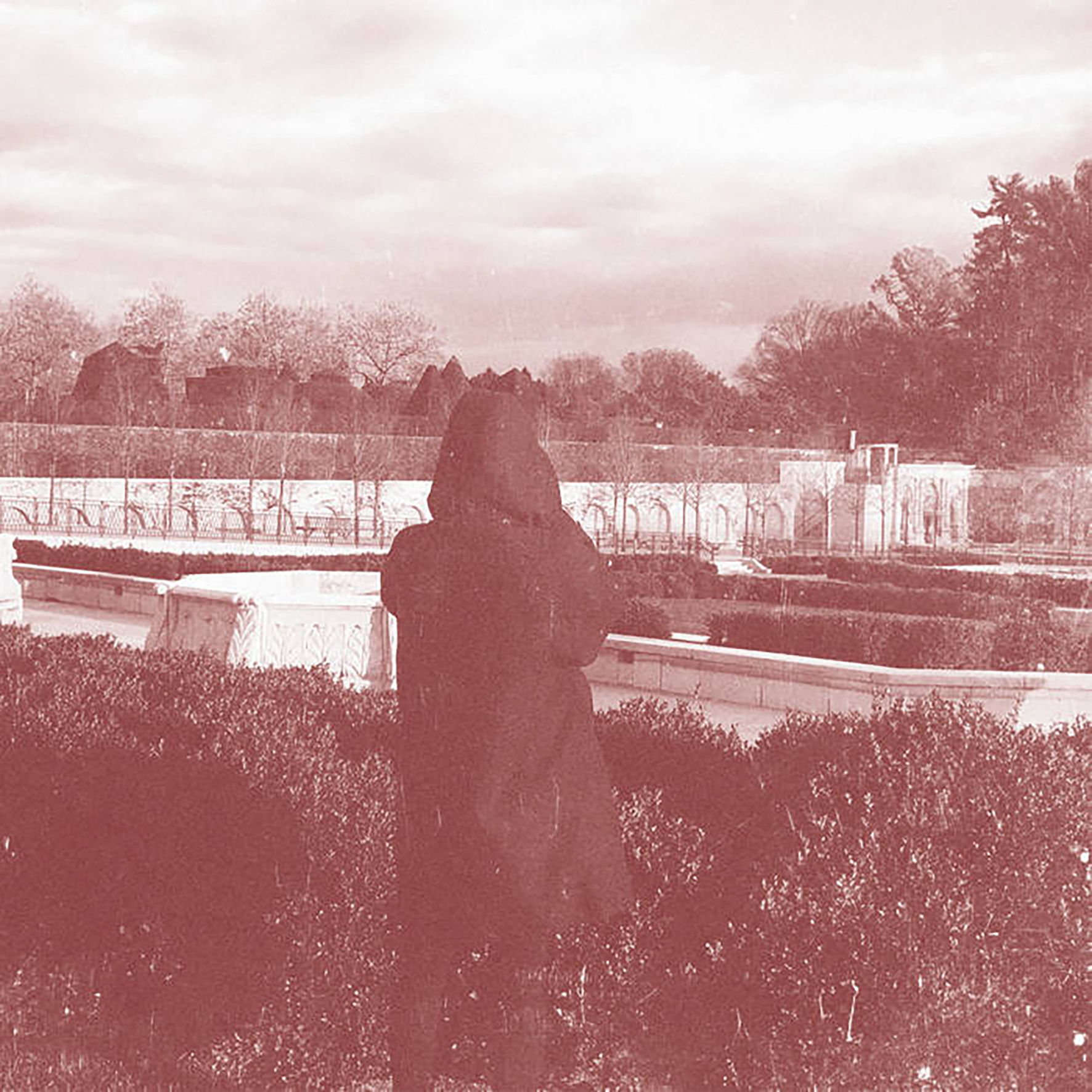 This is Pietrusko's first solo album under his own name, but sound art enthusiasts will likely remember his previous outing as Six Microphones (2019). Elegiya is a radically different release, however, as it comfortably fits within the more ambient/drone side of Room40's aesthetic on its surface. Beneath the surface, however, lies a roiling emotional intensity that sometimes becomes downright volcanic. As befits the album's title, Pietrusko drew his inspiration from elegies, but does so in a very unconventional way, as he was most fascinated by themes of repetition and shifting context. As he himself puts it, "the creation and performance of an elegy, however, is not an experience of this original sorrow but is instead its repetition." The more interesting part, however, is that Pietrusku "attempts to capture the contradictory condition of a macro-level stasis versus a tumultuous interior." In more practical terms, that means that Elegiya transforms five piano motifs into a suite of beautifully melancholy ambient pieces that self-destruct into frayed, blown-out eruptions of emotional catharsis.
This is Pietrusko's first solo album under his own name, but sound art enthusiasts will likely remember his previous outing as Six Microphones (2019). Elegiya is a radically different release, however, as it comfortably fits within the more ambient/drone side of Room40's aesthetic on its surface. Beneath the surface, however, lies a roiling emotional intensity that sometimes becomes downright volcanic. As befits the album's title, Pietrusko drew his inspiration from elegies, but does so in a very unconventional way, as he was most fascinated by themes of repetition and shifting context. As he himself puts it, "the creation and performance of an elegy, however, is not an experience of this original sorrow but is instead its repetition." The more interesting part, however, is that Pietrusku "attempts to capture the contradictory condition of a macro-level stasis versus a tumultuous interior." In more practical terms, that means that Elegiya transforms five piano motifs into a suite of beautifully melancholy ambient pieces that self-destruct into frayed, blown-out eruptions of emotional catharsis.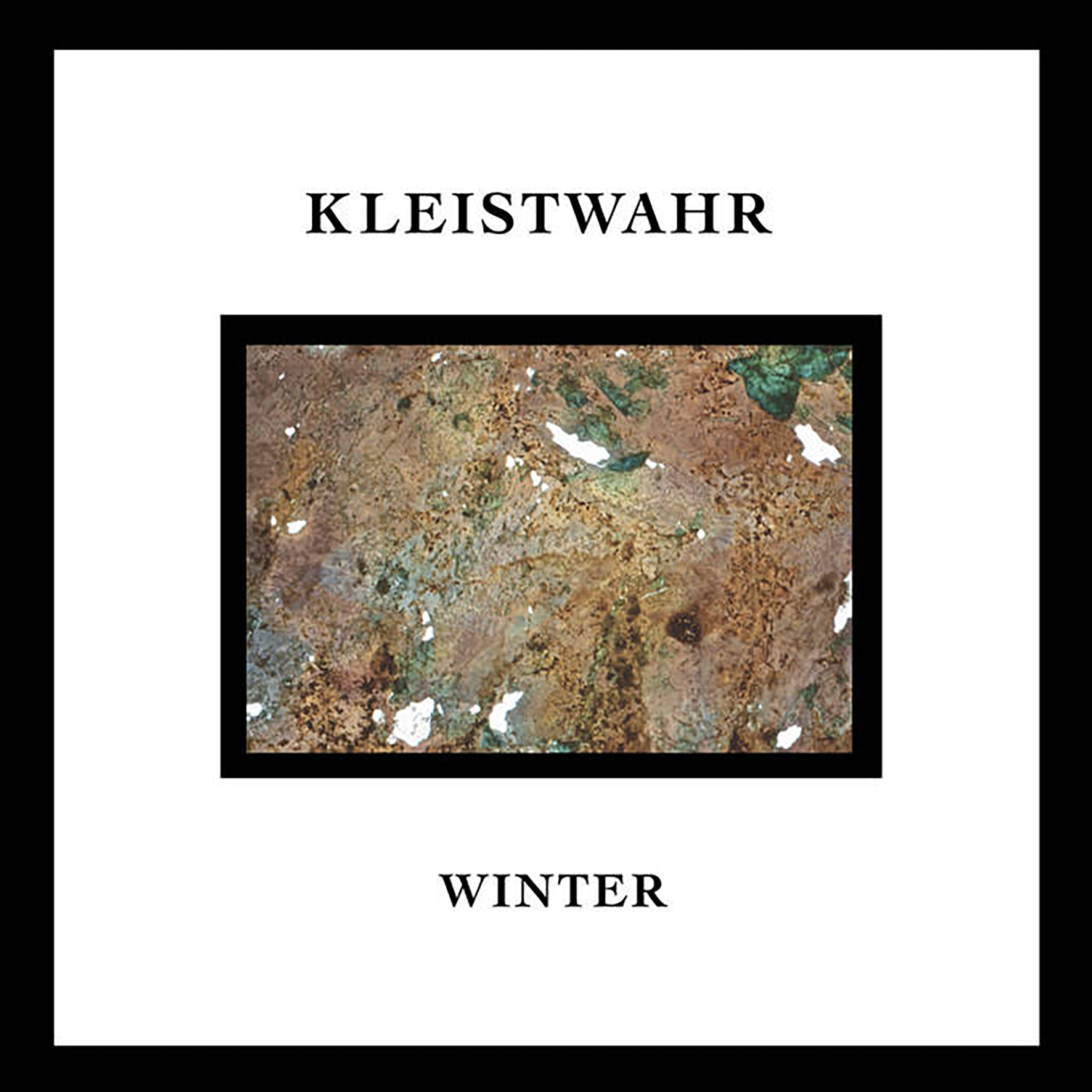 Back in 2019, Helen Scarsdale celebrated its 50th release with a ten-cassette wooden box, On Corrosion, that immediately sold out. While I did manage to pounce on that landmark release in time to get one, I have not spent nearly enough time with it, as absorbing ten full-length albums is quite a herculean time commitment. Consequently, I was delighted to see that the label had embarked upon a campaign to reissue some (or all) of its contents and that they were starting with this bombshell from Gary Mundy's long-running Kleistwahr guise. Being a casual fan of Ramleh and the Broken Flag milieu, I thought I had a solid idea of what to expect from this project (noise, possibly involving guitars), but the striking and unique beauty of this album completely blindsided me. It is fitting that Winter debuted on a release entitled On Corrosion, as it has the feeling of an achingly gorgeous drone album that has been corroded and ravaged into something texturally complex and viscerally soulful.
Back in 2019, Helen Scarsdale celebrated its 50th release with a ten-cassette wooden box, On Corrosion, that immediately sold out. While I did manage to pounce on that landmark release in time to get one, I have not spent nearly enough time with it, as absorbing ten full-length albums is quite a herculean time commitment. Consequently, I was delighted to see that the label had embarked upon a campaign to reissue some (or all) of its contents and that they were starting with this bombshell from Gary Mundy's long-running Kleistwahr guise. Being a casual fan of Ramleh and the Broken Flag milieu, I thought I had a solid idea of what to expect from this project (noise, possibly involving guitars), but the striking and unique beauty of this album completely blindsided me. It is fitting that Winter debuted on a release entitled On Corrosion, as it has the feeling of an achingly gorgeous drone album that has been corroded and ravaged into something texturally complex and viscerally soulful. This London-based electroacoustic composer/instrument builder/DIY electronics enthusiast has been engaged in projects and activities for more than a decade now, but this latest album is the first time his singular vision crossed my path. Antiqua Graecia is the final release of a Greek-themed trilogy that began with 2018's Musique con Crète, though there is also a fourth related work that surfaced on Chocolate Monk last year (Greek Drama). The series is the fruit of an extended creative research project that initially began with a residency, but blossomed into repeat summer visits to Crete to hunt for traditional music albums, perform with local musicians, and make field recordings. While I have not fully absorbed the entire series yet, Antique Graecia feels like a significant creative leap forward from previous installments, as Tamou's earlier Greek forays resemble a Sublime Frequencies album dissolved into a fever dream: there was a clear reverence for the source material, yet Tamou's sound collages imbued traditional music with a murky, spectral character. With Antiqua Graecia, Tamou decided to go for broke, gleefully chopping and layering folk songs in a wonderfully psychotropic fantasia. I find all of the strains of Tamou's Greek series to be compelling, but this album is the one that most beautifully transcends tradition to feel like something wonderful and new.
This London-based electroacoustic composer/instrument builder/DIY electronics enthusiast has been engaged in projects and activities for more than a decade now, but this latest album is the first time his singular vision crossed my path. Antiqua Graecia is the final release of a Greek-themed trilogy that began with 2018's Musique con Crète, though there is also a fourth related work that surfaced on Chocolate Monk last year (Greek Drama). The series is the fruit of an extended creative research project that initially began with a residency, but blossomed into repeat summer visits to Crete to hunt for traditional music albums, perform with local musicians, and make field recordings. While I have not fully absorbed the entire series yet, Antique Graecia feels like a significant creative leap forward from previous installments, as Tamou's earlier Greek forays resemble a Sublime Frequencies album dissolved into a fever dream: there was a clear reverence for the source material, yet Tamou's sound collages imbued traditional music with a murky, spectral character. With Antiqua Graecia, Tamou decided to go for broke, gleefully chopping and layering folk songs in a wonderfully psychotropic fantasia. I find all of the strains of Tamou's Greek series to be compelling, but this album is the one that most beautifully transcends tradition to feel like something wonderful and new.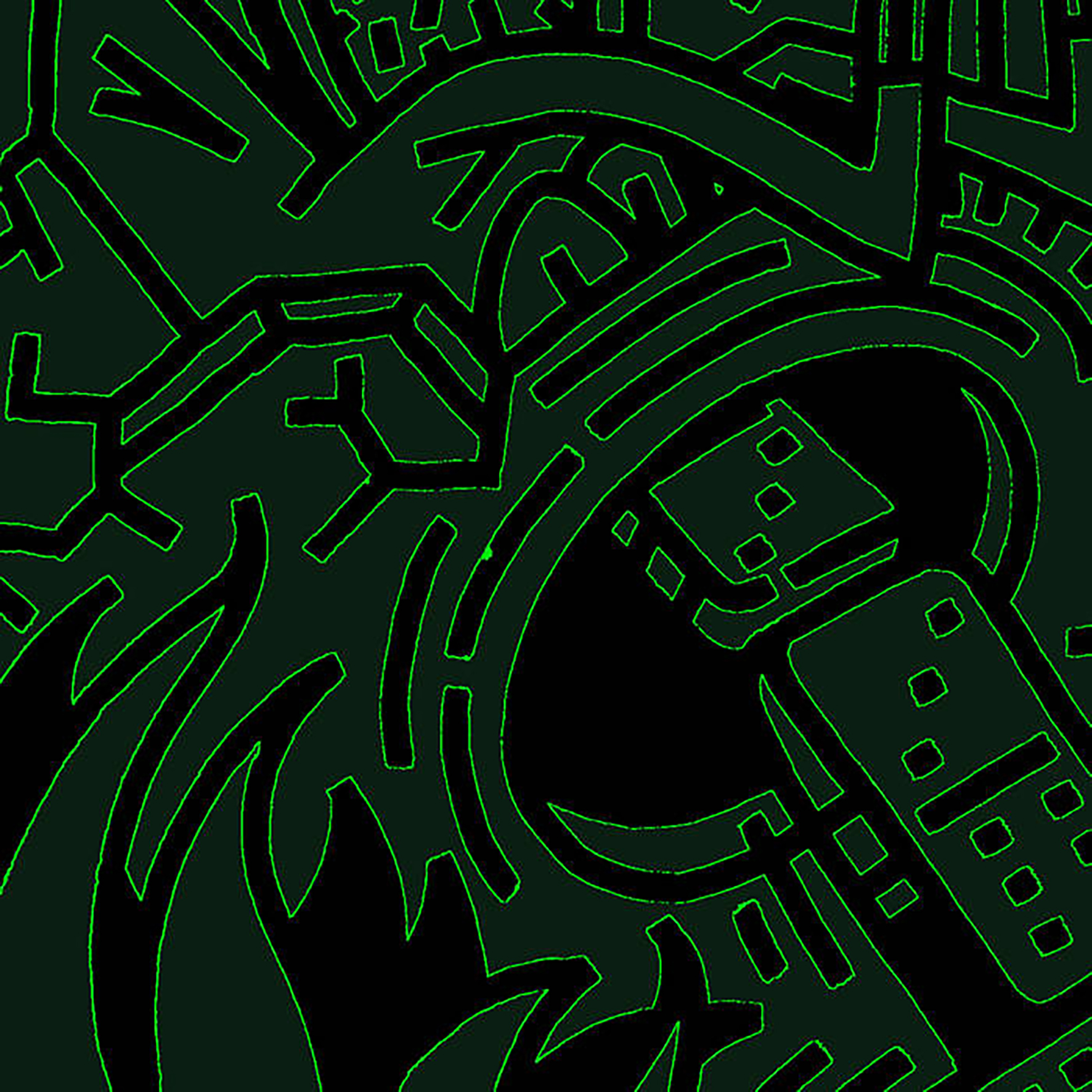 This debut full-length from Ugandan producer Zilla is something of a much-anticipated event, as his Boutiq studio is a crucial part of the killer underground music scene centered around Kampala's Nyege Nyege Tapes. Ekizikiza Mubwengula was additionally anticipated because it is the follow up to an absolute monster of a single that Zilla released in 2019 on Nyege Nyege's club music-themed sub-label Hakuna Kulala. While this latest release is on that same imprint, these songs are considerably wilder and weirder than the more straightforward (and relentlessly, viscerally danceable) "From the Cave." With Ekizikiza Mubwengula, Zilla shoots right past the cutting edge of contemporary dance music and lands somewhere akin to an industrial-damaged dance deconstruction of Rashad Becker's deeply alien Music for Notional Species. Predictably, I am the exact demographic for such a gleefully unhinged tour de force, and this would be the ideal soundtrack for a party occurring exclusively in my head. Yet it is quite a challenge to imagine songs this pointedly hookless and aggressively outré packing the floors of any but the craziest clubs on earth. Granted, there are a handful of more straightforward pieces here too (Zilla's production is as exacting and punchy as ever), but those will not be the ones that people most remember.
This debut full-length from Ugandan producer Zilla is something of a much-anticipated event, as his Boutiq studio is a crucial part of the killer underground music scene centered around Kampala's Nyege Nyege Tapes. Ekizikiza Mubwengula was additionally anticipated because it is the follow up to an absolute monster of a single that Zilla released in 2019 on Nyege Nyege's club music-themed sub-label Hakuna Kulala. While this latest release is on that same imprint, these songs are considerably wilder and weirder than the more straightforward (and relentlessly, viscerally danceable) "From the Cave." With Ekizikiza Mubwengula, Zilla shoots right past the cutting edge of contemporary dance music and lands somewhere akin to an industrial-damaged dance deconstruction of Rashad Becker's deeply alien Music for Notional Species. Predictably, I am the exact demographic for such a gleefully unhinged tour de force, and this would be the ideal soundtrack for a party occurring exclusively in my head. Yet it is quite a challenge to imagine songs this pointedly hookless and aggressively outré packing the floors of any but the craziest clubs on earth. Granted, there are a handful of more straightforward pieces here too (Zilla's production is as exacting and punchy as ever), but those will not be the ones that people most remember.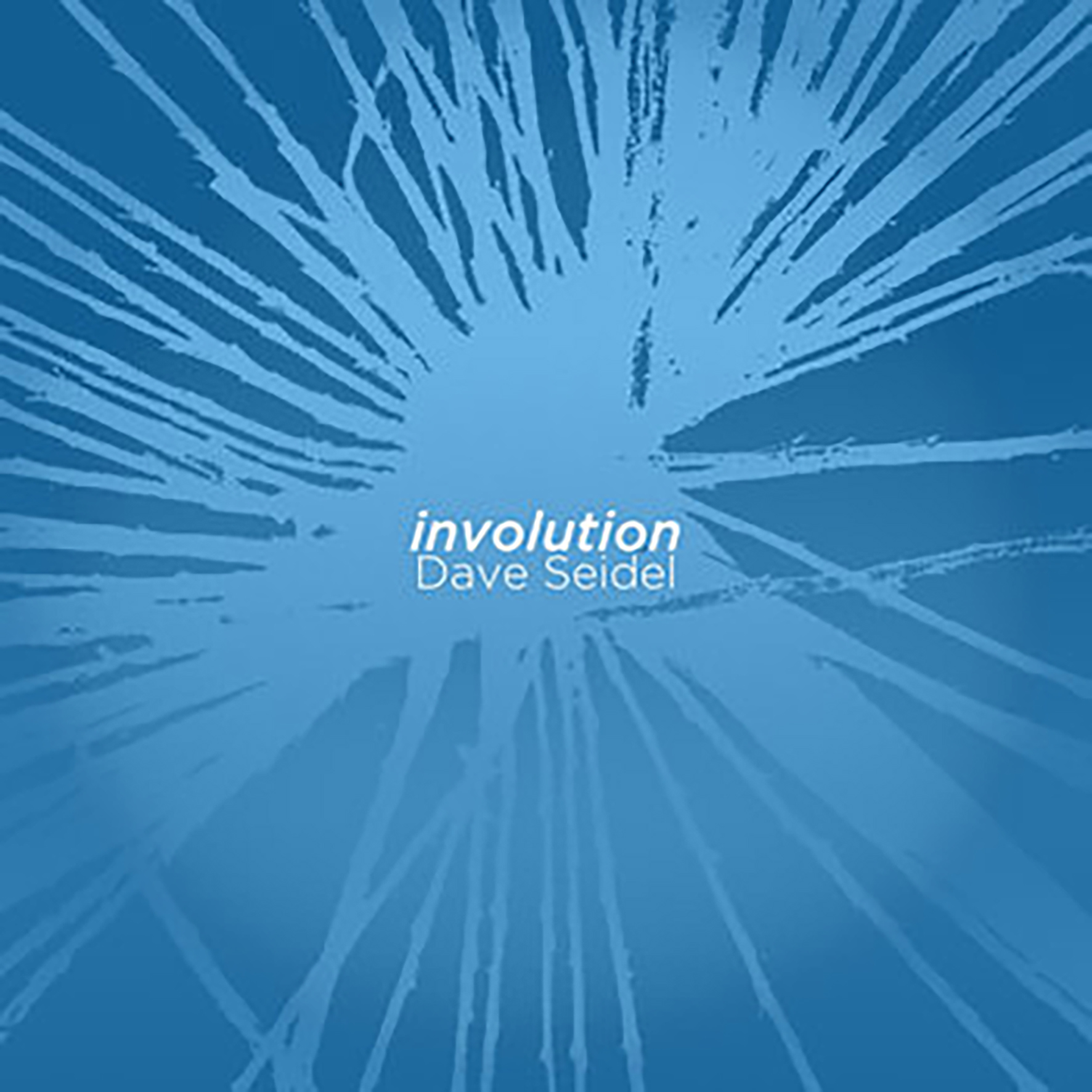 This challenging and overwhelming double album is my first exposure to this NH-based composer, and it was quite a synapse-frying introduction to his uncompromising vision. While Seidel has only been releasing albums as a composer for the last decade or so, he was an active part of NYC's flourishing Downtown music scene in the '80s, and his work feels like it is spiritually descended from that era. Or perhaps from even before that, as he cites Alvin Lucier and La Monte Young as key influences. Unlike most artists inspired by Young, however, Seidel did not stop at dabbling in Just Intonation. Instead, he took "Young's ideal of previously unheard sounds, those that may engender new sensations and emotions in the listener" and ran with it, delving even deeper into unusual tunings until he could bring to life the sonorities that he was chasing. In practical terms, that means that the two compositions here ("Involution" and "Hexany Permutations") are longform drone works teaming with strange and buzzing harmonic collisions, which makes Phill Niblock's XI Records exactly the right home for this epic. While I suspect many people will find Seidel's single-minded and no-frills approach to conjuring unfamiliar sounds intimidatingly difficult, this album will definitely make a big impression on anyone fascinated by the physics and physicality of sound.
This challenging and overwhelming double album is my first exposure to this NH-based composer, and it was quite a synapse-frying introduction to his uncompromising vision. While Seidel has only been releasing albums as a composer for the last decade or so, he was an active part of NYC's flourishing Downtown music scene in the '80s, and his work feels like it is spiritually descended from that era. Or perhaps from even before that, as he cites Alvin Lucier and La Monte Young as key influences. Unlike most artists inspired by Young, however, Seidel did not stop at dabbling in Just Intonation. Instead, he took "Young's ideal of previously unheard sounds, those that may engender new sensations and emotions in the listener" and ran with it, delving even deeper into unusual tunings until he could bring to life the sonorities that he was chasing. In practical terms, that means that the two compositions here ("Involution" and "Hexany Permutations") are longform drone works teaming with strange and buzzing harmonic collisions, which makes Phill Niblock's XI Records exactly the right home for this epic. While I suspect many people will find Seidel's single-minded and no-frills approach to conjuring unfamiliar sounds intimidatingly difficult, this album will definitely make a big impression on anyone fascinated by the physics and physicality of sound.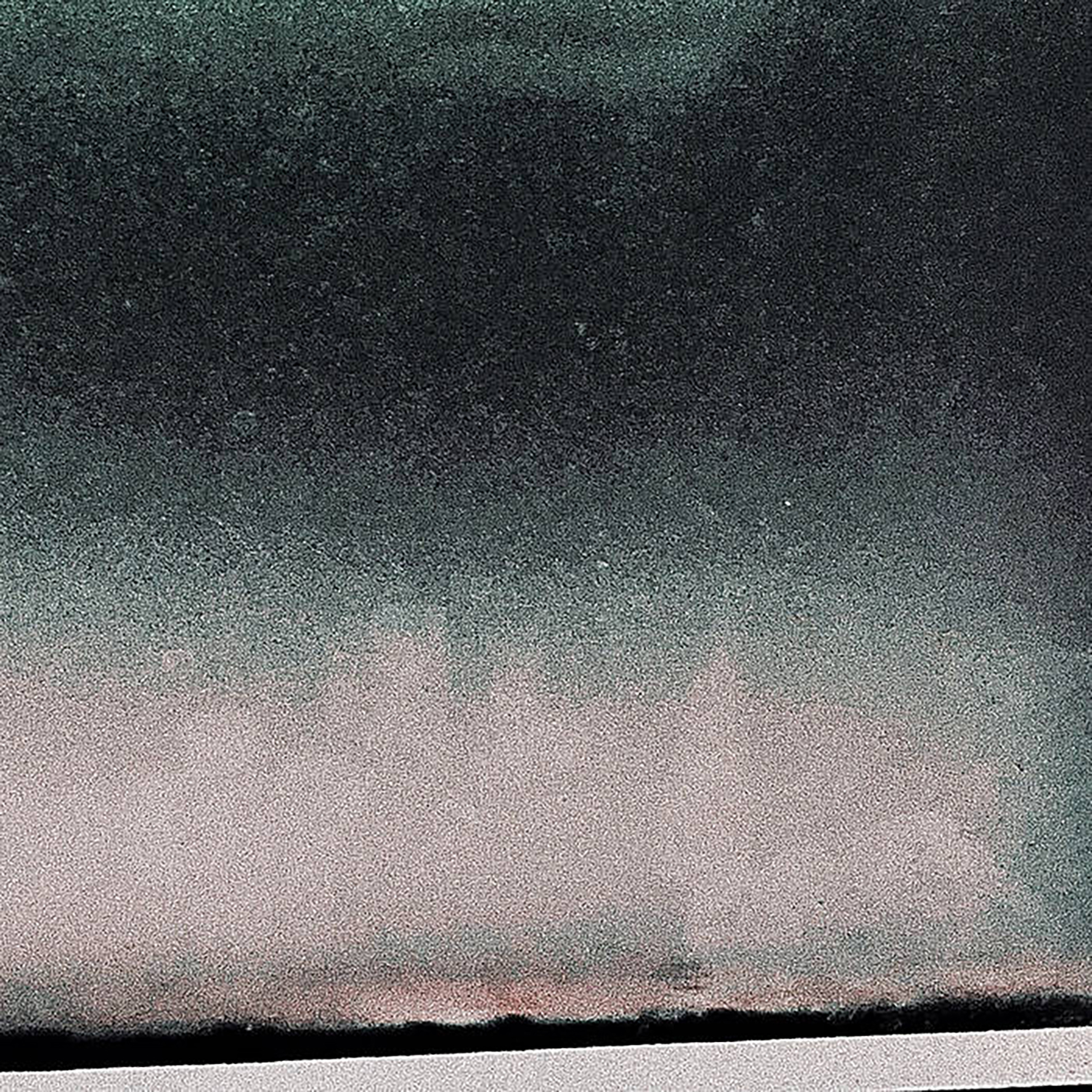 This is the first installment of "an ongoing album series with an undecided end point examining futility and beauty." Those are hardly new themes for Kyle Bobby Dunn, so I am not sure why they needed their own series, but any new KBD opus is fine by me. Dunn is a unique figure in the ambient drone milieu for a number of reasons, but the most significant for me is his unique gift for crafting soundscapes with a very real emotional intensity at their core. When he directly hits the mark with a composition like "Triple Axel on Cremazie" or "The Searchers," he achieves something poignant and transcendent that is damn hard to come by. I suppose one caveat with Dunn's work is that such moments are usually hidden within sprawling double-, triple-, or quadruple-LP epics, but this latest album is a more focused and concise release. More importantly, the bulk of the album is devoted to the absolutely sublime 48-minute "Fantasia on a Theme of Affection." The other two pieces are memorable as well, arguably making this the closest that Dunn has come to releasing an "all killer, no filler" masterpiece.
This is the first installment of "an ongoing album series with an undecided end point examining futility and beauty." Those are hardly new themes for Kyle Bobby Dunn, so I am not sure why they needed their own series, but any new KBD opus is fine by me. Dunn is a unique figure in the ambient drone milieu for a number of reasons, but the most significant for me is his unique gift for crafting soundscapes with a very real emotional intensity at their core. When he directly hits the mark with a composition like "Triple Axel on Cremazie" or "The Searchers," he achieves something poignant and transcendent that is damn hard to come by. I suppose one caveat with Dunn's work is that such moments are usually hidden within sprawling double-, triple-, or quadruple-LP epics, but this latest album is a more focused and concise release. More importantly, the bulk of the album is devoted to the absolutely sublime 48-minute "Fantasia on a Theme of Affection." The other two pieces are memorable as well, arguably making this the closest that Dunn has come to releasing an "all killer, no filler" masterpiece.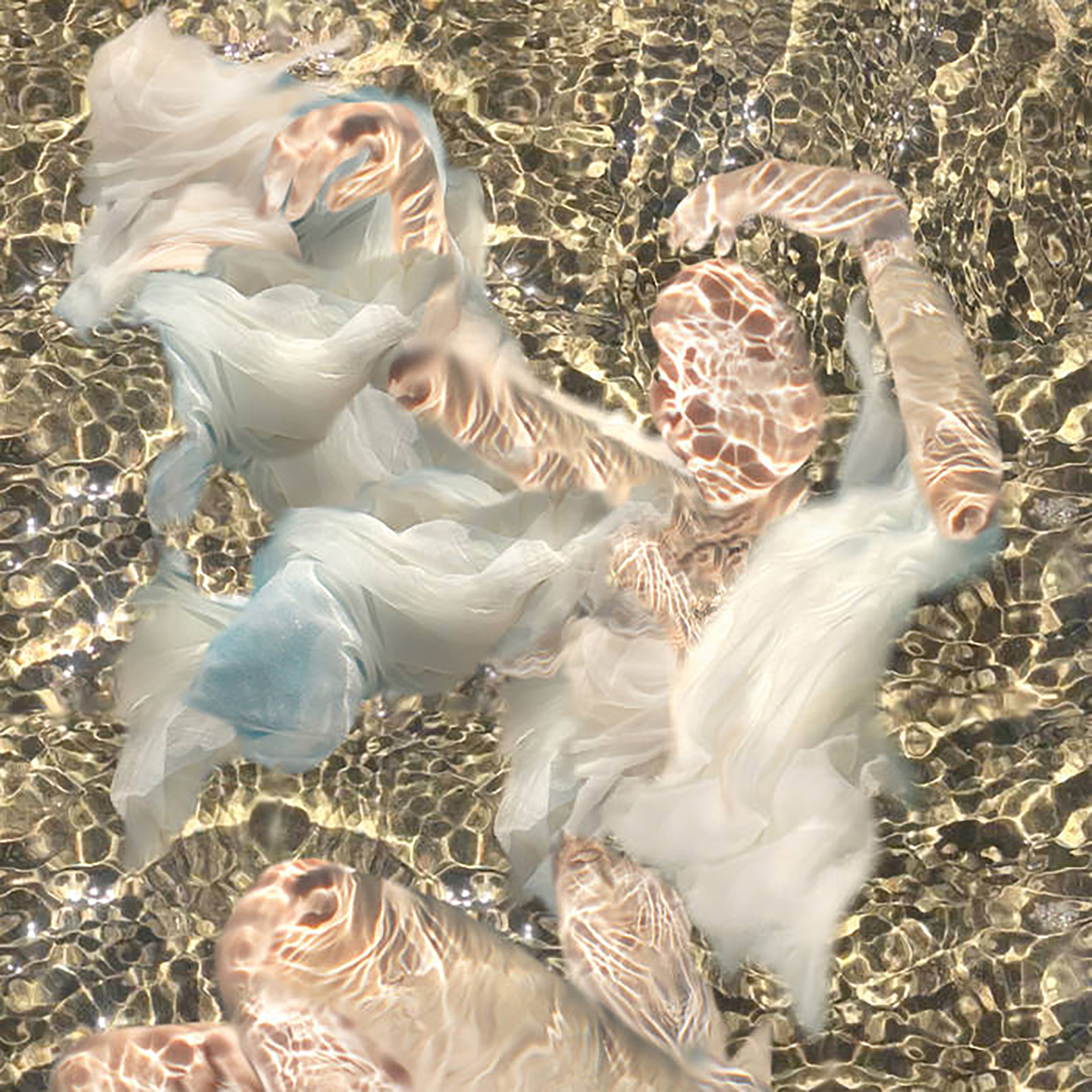 I loved Sage Fisher's last album (the wonderful and hallucinatory Liminal Garden), so I was quite eager to find out how she would follow such a unique vision. Now that Body of Water has been released, I have my answer and it is very much an expectation-subverting one. While the harp arguably remains Fisher's primary instrument, her vocals take a much more prominent role with this latest opus. That is a twist, certainly, but it is not THE twist, which is that Fisher enlisted the aid of acclaimed producer Tucker Martine to craft a suite of songs that feels like a sensual and psychotropic strain of outsider R&B. Whether it is close enough to the real thing to make an impact beyond underground electronic music circles remains to be seen, but Fisher's stylistic reinvention is an extremely cool and surprising one regardless. Admittedly, it took me a few listens to fully warm to the unabashed pop hooks that fill this album, but Fisher's more lysergic impulses are never far away, resulting in an immersive swirl of delightful mindfuckery anchored by memorable hooks, simmering grooves, and a newly unveiled soulfulness.
I loved Sage Fisher's last album (the wonderful and hallucinatory Liminal Garden), so I was quite eager to find out how she would follow such a unique vision. Now that Body of Water has been released, I have my answer and it is very much an expectation-subverting one. While the harp arguably remains Fisher's primary instrument, her vocals take a much more prominent role with this latest opus. That is a twist, certainly, but it is not THE twist, which is that Fisher enlisted the aid of acclaimed producer Tucker Martine to craft a suite of songs that feels like a sensual and psychotropic strain of outsider R&B. Whether it is close enough to the real thing to make an impact beyond underground electronic music circles remains to be seen, but Fisher's stylistic reinvention is an extremely cool and surprising one regardless. Admittedly, it took me a few listens to fully warm to the unabashed pop hooks that fill this album, but Fisher's more lysergic impulses are never far away, resulting in an immersive swirl of delightful mindfuckery anchored by memorable hooks, simmering grooves, and a newly unveiled soulfulness.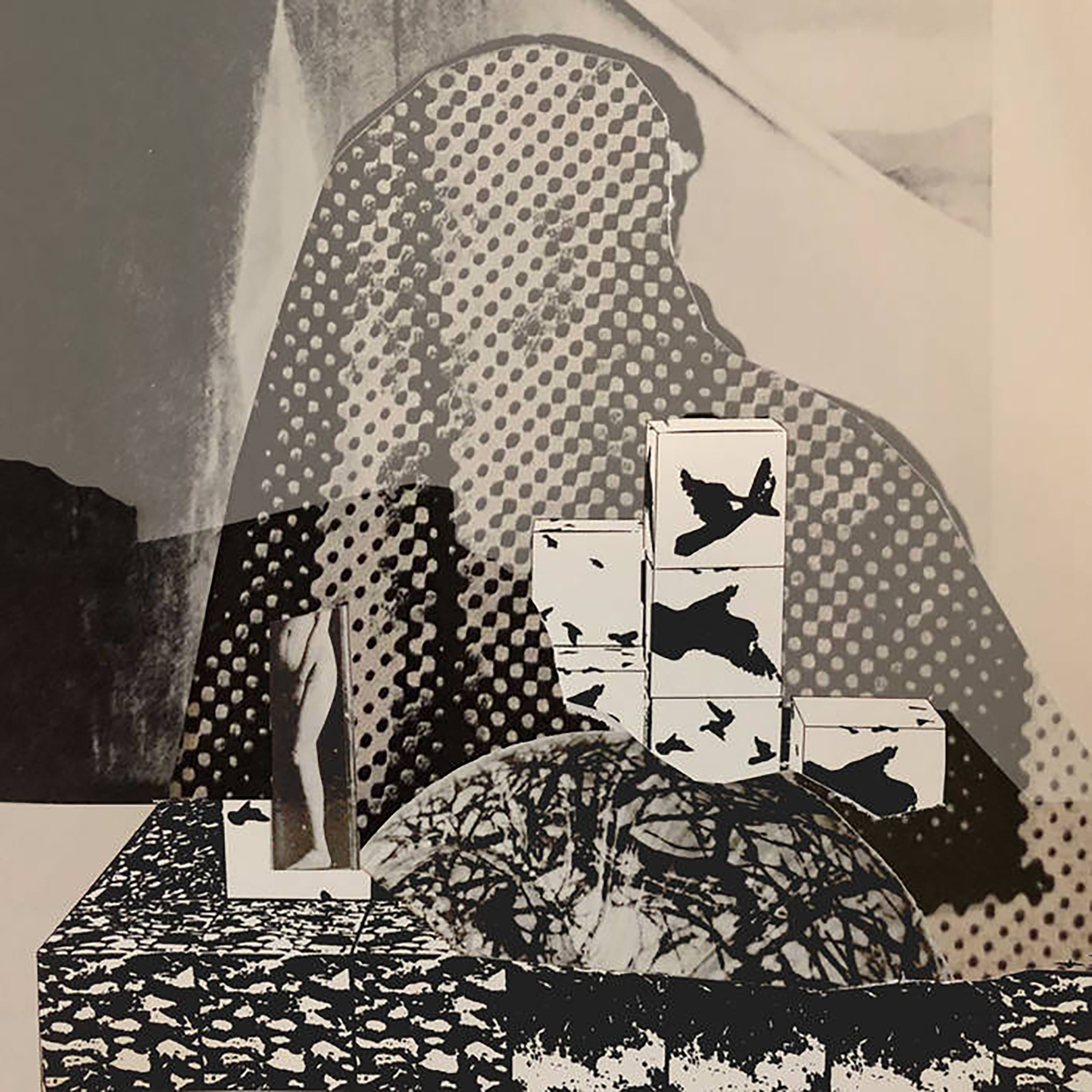 There was a period between 2010 and 2013 in which Rachel Evans seemed like a universally celebrated and ubiquitous figure in the "experimental music" milieu, as she released a flurry of tapes and LPs on a variety of great labels in a very short span. Since then, she has embraced a considerably more quiet and homespun approach to her art, self-releasing a steady and increasingly eclectic stream of limited edition tapes/CDrs/art objects to the delight of fans like myself. This latest release is an especially divergent and ambitious one, as Evans rarely releases vinyl and even more rarely shifts her focus towards acoustic instrumentation or conventional songcraft. The latter deserves an asterisk though, as there is only one brief song lurking within these two longform soundscapes and it largely appears in submerged form, but it is still quite a good one regardless. While the appearance of that surprise song is very much an album highlight, it is just one part of a larger and wonderfully hallucinatory whole. In fact, If We Were Landscapes is strong evidence that the golden age of Motion Sickness of Time Travel is still unfolding and that Evans' acclaimed run of albums like Seeping Through the Veil of Unconscious was actually just the tip of an expanding iceberg of future delights.
There was a period between 2010 and 2013 in which Rachel Evans seemed like a universally celebrated and ubiquitous figure in the "experimental music" milieu, as she released a flurry of tapes and LPs on a variety of great labels in a very short span. Since then, she has embraced a considerably more quiet and homespun approach to her art, self-releasing a steady and increasingly eclectic stream of limited edition tapes/CDrs/art objects to the delight of fans like myself. This latest release is an especially divergent and ambitious one, as Evans rarely releases vinyl and even more rarely shifts her focus towards acoustic instrumentation or conventional songcraft. The latter deserves an asterisk though, as there is only one brief song lurking within these two longform soundscapes and it largely appears in submerged form, but it is still quite a good one regardless. While the appearance of that surprise song is very much an album highlight, it is just one part of a larger and wonderfully hallucinatory whole. In fact, If We Were Landscapes is strong evidence that the golden age of Motion Sickness of Time Travel is still unfolding and that Evans' acclaimed run of albums like Seeping Through the Veil of Unconscious was actually just the tip of an expanding iceberg of future delights.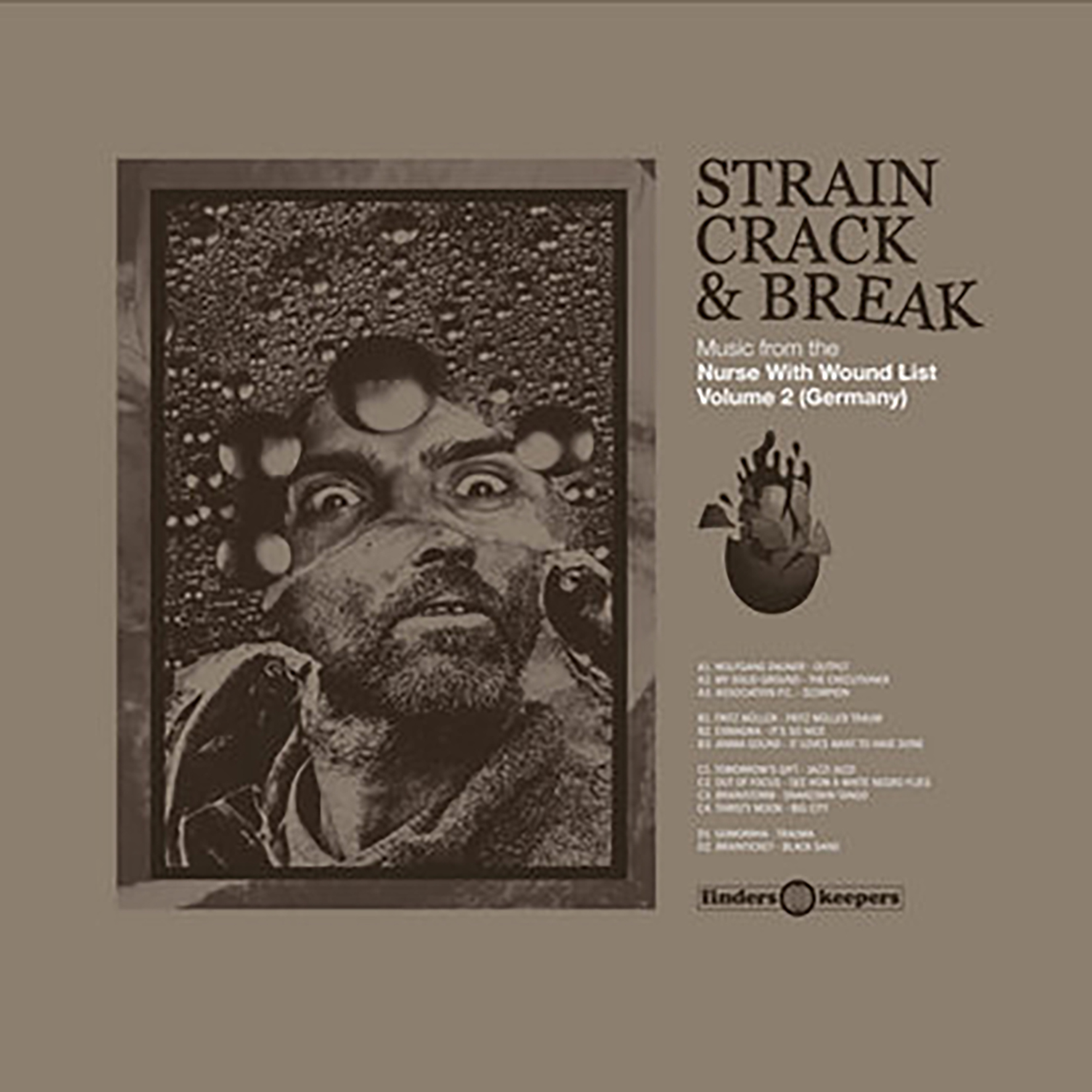 As a longtime Nurse With Wound fan, I have always been a bit amused and perplexed by the almost-religious reverence that people continue to have for Steven Stapleton's famous list. For one, it is hard to process that there was once a teenager in the '70s who was so cool that adults all over the world would spend the next forty years trying to replicate his record collection. Secondly, it seems like any underground bands from that era who have managed to remain obscure until now have probably earned that fate for valid reasons, as there have been plenty of blogs and reissue labels tirelessly unearthing and championing freaky sounds since the advent of the internet. Consequently, when this series was announced, I wondered what could still possibly be left undiscovered. That said, the idea of a Stapleton-curated tour of the most outré and adventurous prog, jazz, and avant-garde artists of the early- and mid-1970s still packs quite an appeal for me, so I am delighted that this better-late-than-never series exists. It admittedly took me a while to warm to the French volume, as I tend to run screaming from proggy indulgence and unfiltered Dada antics and there was plenty of both, but there were definitely some gems as well. Unsurprisingly, this stronger second volume features an even higher proportion of such gems, as it is not a mere coincidence that krautrock had a larger cultural impact than its French counterpart.
As a longtime Nurse With Wound fan, I have always been a bit amused and perplexed by the almost-religious reverence that people continue to have for Steven Stapleton's famous list. For one, it is hard to process that there was once a teenager in the '70s who was so cool that adults all over the world would spend the next forty years trying to replicate his record collection. Secondly, it seems like any underground bands from that era who have managed to remain obscure until now have probably earned that fate for valid reasons, as there have been plenty of blogs and reissue labels tirelessly unearthing and championing freaky sounds since the advent of the internet. Consequently, when this series was announced, I wondered what could still possibly be left undiscovered. That said, the idea of a Stapleton-curated tour of the most outré and adventurous prog, jazz, and avant-garde artists of the early- and mid-1970s still packs quite an appeal for me, so I am delighted that this better-late-than-never series exists. It admittedly took me a while to warm to the French volume, as I tend to run screaming from proggy indulgence and unfiltered Dada antics and there was plenty of both, but there were definitely some gems as well. Unsurprisingly, this stronger second volume features an even higher proportion of such gems, as it is not a mere coincidence that krautrock had a larger cultural impact than its French counterpart.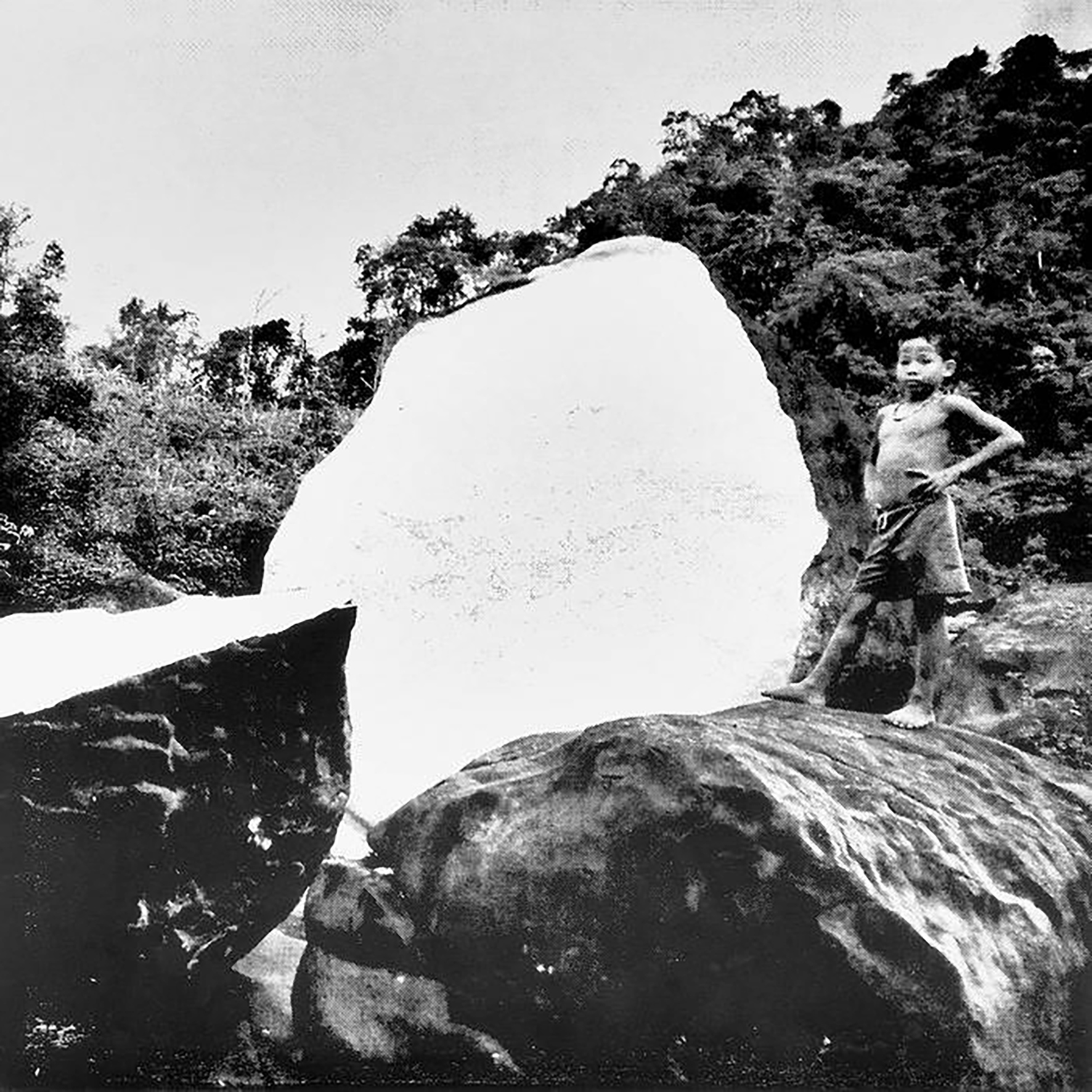 It is quite a daunting task to keep up with Laurent Jeanneau's massive, continually expanding, and oft-challenging discography, but his vinyl releases always tend to be strong and focused statements worth investigating. In that regard, Jeanneau is having quite a great year, as this latest LP is his third excellent album of 2021 (Kink Gong's Zomia Vol. 1 and Sublime Frequencies' Mien (Yao) being the other two). Zomianscape continues Jeanneau's fascination with "Zomia," which is a half-conceptual/half-geographic term for the ethnic minorities in the hills and mountains of Southeast Asia who live outside national laws and customs. The term was first coined by historian Willem van Schendel in 2002, but it was James C. Scott's The Art of Not Being Governed: An Anarchist History of Upland Southeast Asia that particularly struck Jeanneau, as he conceived of the Zomia series as a "mythological soundscape inspired by a semi-utopic region where state rules don't apply." The raw material for these first two longform "Zomianscapes" was recorded over ten years in Cambodia, Laos, Vietnam, and China, but the boundaries between individual cultures, field recordings, and Jeanneau's own contributions are beautifully dissolved into a mesmerizing stew of hallucinatory sound collage. I suppose Zomia Vol. I achieved a similar end in more bite-sized doses, but this follow up offers a deeper, more immersive plunge.
It is quite a daunting task to keep up with Laurent Jeanneau's massive, continually expanding, and oft-challenging discography, but his vinyl releases always tend to be strong and focused statements worth investigating. In that regard, Jeanneau is having quite a great year, as this latest LP is his third excellent album of 2021 (Kink Gong's Zomia Vol. 1 and Sublime Frequencies' Mien (Yao) being the other two). Zomianscape continues Jeanneau's fascination with "Zomia," which is a half-conceptual/half-geographic term for the ethnic minorities in the hills and mountains of Southeast Asia who live outside national laws and customs. The term was first coined by historian Willem van Schendel in 2002, but it was James C. Scott's The Art of Not Being Governed: An Anarchist History of Upland Southeast Asia that particularly struck Jeanneau, as he conceived of the Zomia series as a "mythological soundscape inspired by a semi-utopic region where state rules don't apply." The raw material for these first two longform "Zomianscapes" was recorded over ten years in Cambodia, Laos, Vietnam, and China, but the boundaries between individual cultures, field recordings, and Jeanneau's own contributions are beautifully dissolved into a mesmerizing stew of hallucinatory sound collage. I suppose Zomia Vol. I achieved a similar end in more bite-sized doses, but this follow up offers a deeper, more immersive plunge.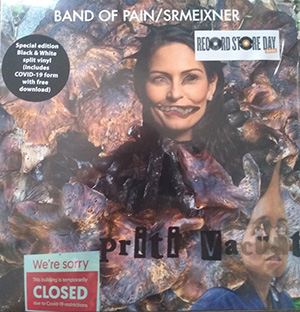 Taking a cue from the politicization of the COVID pandemic, Band of Pain (Steve Pittis) and Contrastate's Stephen Meixner teamed up for this collaborative single, with each taking the lead on a solo piece, and then a balanced collaboration to conclude. Heavily based on samples of speeches and news reports, it is certainly a politically charged work, but one that remains heavily rooted in both artists’ post-industrial and absurdist sensibilities.
Taking a cue from the politicization of the COVID pandemic, Band of Pain (Steve Pittis) and Contrastate's Stephen Meixner teamed up for this collaborative single, with each taking the lead on a solo piece, and then a balanced collaboration to conclude. Heavily based on samples of speeches and news reports, it is certainly a politically charged work, but one that remains heavily rooted in both artists’ post-industrial and absurdist sensibilities.